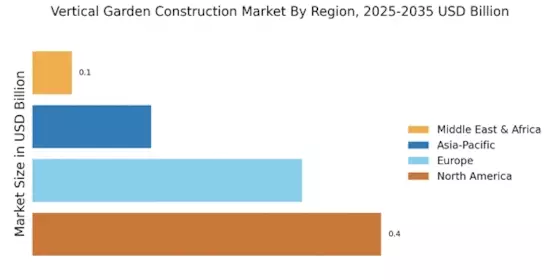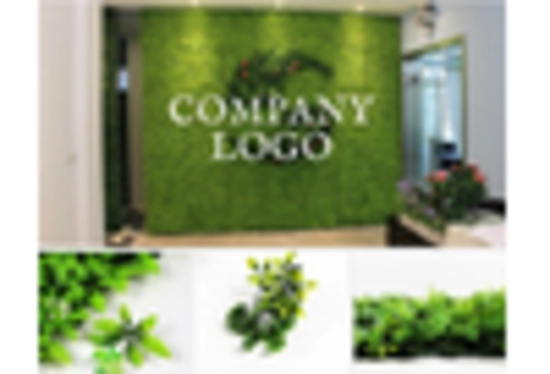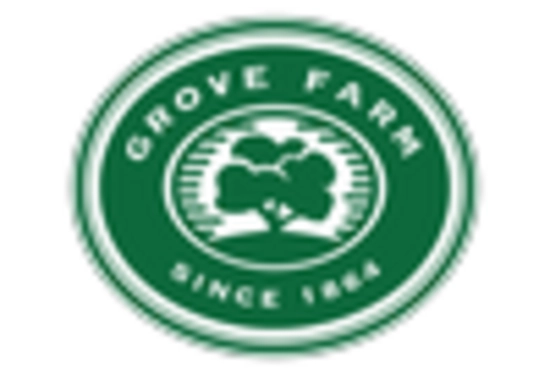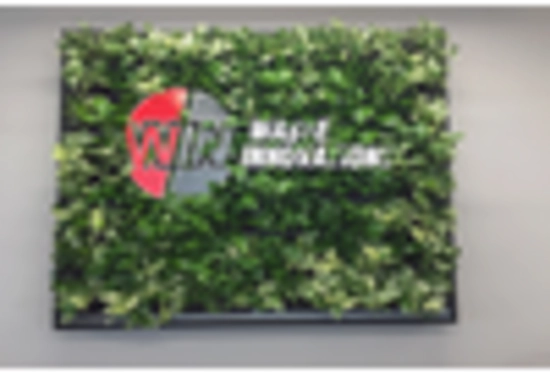The Vertical Garden Construction Market is currently characterized by a dynamic competitive landscape, driven by increasing urbanization, environmental sustainability concerns, and a growing consumer preference for green spaces. Key players such as Green Walls (US), Vertical Garden Solutions (AU), and Biotecture (GB) are strategically positioning themselves through innovation and regional expansion. Green Walls (US) focuses on integrating advanced irrigation systems into their designs, enhancing the sustainability of their installations. Meanwhile, Vertical Garden Solutions (AU) emphasizes partnerships with local governments to promote urban greening initiatives, thereby expanding their market reach. Biotecture (GB) is leveraging digital transformation by utilizing augmented reality tools to visualize projects for clients, which appears to enhance customer engagement and satisfaction. Collectively, these strategies contribute to a competitive environment that is increasingly focused on sustainability and technological integration.
In terms of business tactics, companies are localizing manufacturing to reduce costs and optimize supply chains, which is particularly relevant in the context of rising material costs. The market structure is moderately fragmented, with numerous players vying for market share, yet the influence of key players is substantial. This fragmentation allows for niche players to thrive, while larger companies leverage their resources to dominate in innovation and customer service.
In August 2025, Green Walls (US) announced a partnership with a leading technology firm to develop smart vertical garden systems that utilize IoT sensors for real-time monitoring of plant health. This strategic move not only positions Green Walls at the forefront of technological innovation but also aligns with the growing trend of smart city initiatives, potentially attracting a new customer base interested in high-tech solutions.
In July 2025, Vertical Garden Solutions (AU) launched a new initiative aimed at creating vertical gardens in public spaces across major Australian cities. This initiative is significant as it not only enhances their brand visibility but also aligns with governmental sustainability goals, thereby fostering goodwill and potentially leading to future contracts.
In September 2025, Biotecture (GB) unveiled a new line of eco-friendly vertical garden systems made from recycled materials. This move is indicative of a broader trend towards sustainability in the construction sector, appealing to environmentally conscious consumers and businesses alike. By prioritizing eco-friendly materials, Biotecture is likely to strengthen its market position and attract clients who value sustainability.
As of October 2025, the competitive trends in the Vertical Garden Construction Market are increasingly defined by digitalization, sustainability, and the integration of artificial intelligence. Strategic alliances are becoming more prevalent, as companies recognize the value of collaboration in enhancing their service offerings and expanding their market presence. Looking ahead, competitive differentiation is expected to evolve from traditional price-based competition to a focus on innovation, technology, and supply chain reliability, suggesting that companies that can effectively leverage these trends will likely emerge as leaders in the market.


















Leave a Comment